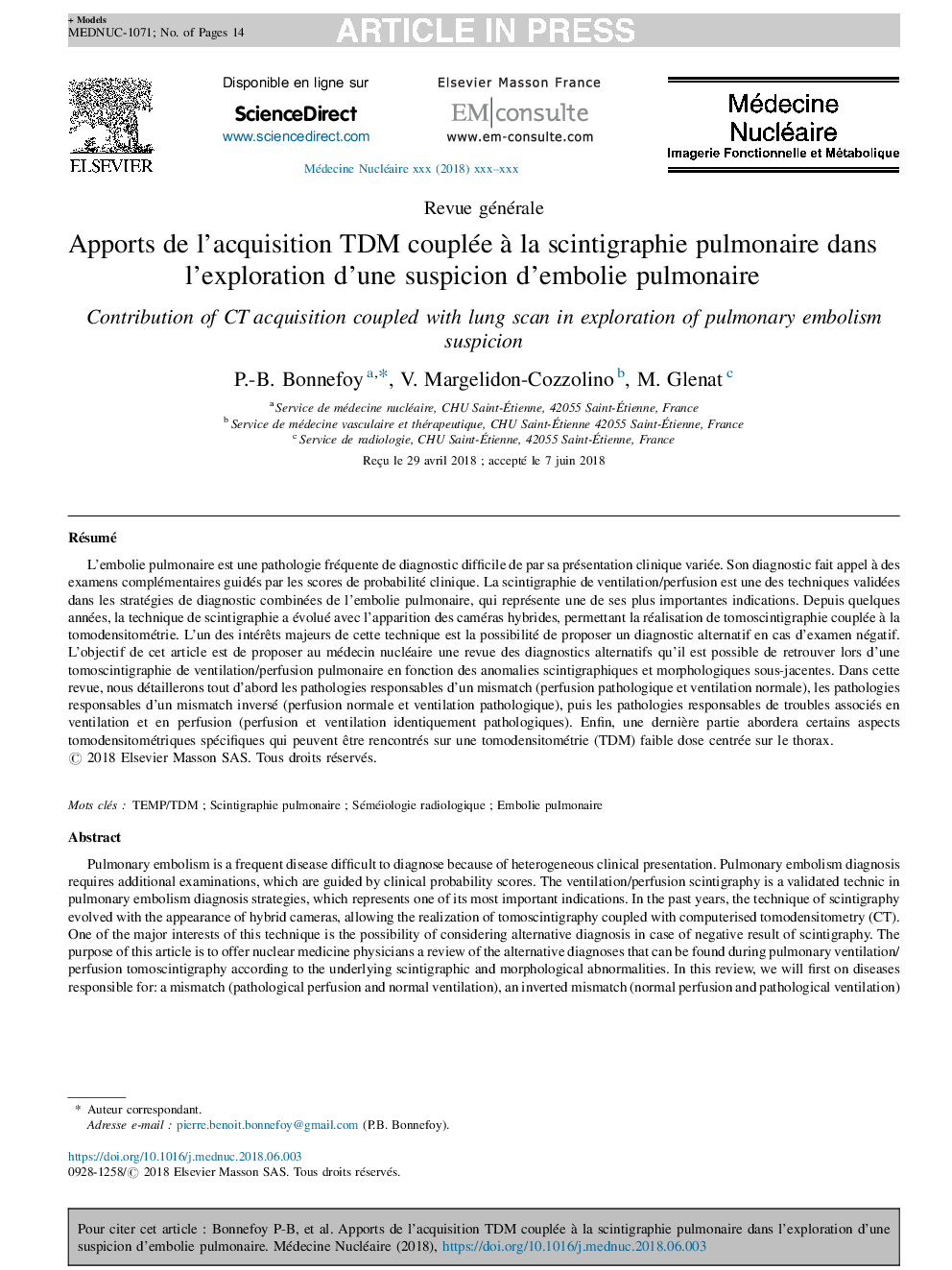| Article ID | Journal | Published Year | Pages | File Type |
|---|---|---|---|---|
| 8824472 | Médecine Nucléaire | 2018 | 14 Pages |
Abstract
Pulmonary embolism is a frequent disease difficult to diagnose because of heterogeneous clinical presentation. Pulmonary embolism diagnosis requires additional examinations, which are guided by clinical probability scores. The ventilation/perfusion scintigraphy is a validated technic in pulmonary embolism diagnosis strategies, which represents one of its most important indications. In the past years, the technique of scintigraphy evolved with the appearance of hybrid cameras, allowing the realization of tomoscintigraphy coupled with computerised tomodensitometry (CT). One of the major interests of this technique is the possibility of considering alternative diagnosis in case of negative result of scintigraphy. The purpose of this article is to offer nuclear medicine physicians a review of the alternative diagnoses that can be found during pulmonary ventilation/perfusion tomoscintigraphy according to the underlying scintigraphic and morphological abnormalities. In this review, we will first on diseases responsible for: a mismatch (pathological perfusion and normal ventilation), an inverted mismatch (normal perfusion and pathological ventilation) and for associated disorders in ventilation and in perfusion patterns (identically abnormal perfusion and ventilation). The final part will address some specific CT features that can be encountered on a low dose CT centered on thorax.
Related Topics
Health Sciences
Medicine and Dentistry
Radiology and Imaging
Authors
P.-B. Bonnefoy, V. Margelidon-Cozzolino, M. Glenat,
